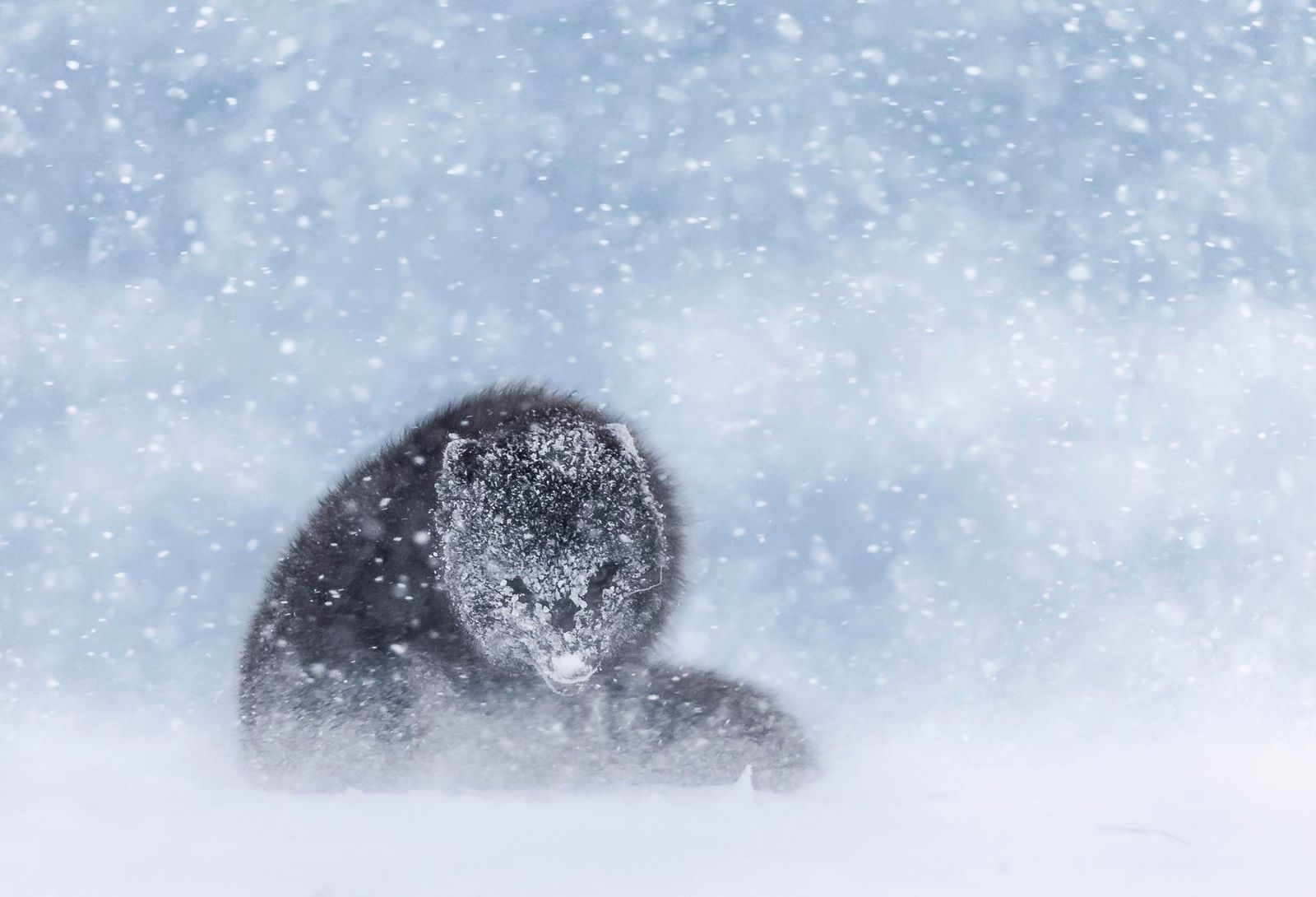Endurance
Category
Land Animal
Location
Hornstrandir, Iceland
Gear
Canon 1DX, Sigma 150-600mm Sports Lens
Description
Taken at ISO 3200, 430mm, F6.3, 1/800 After watching a video by Joshua Holko - an Australian photographer - photographing Arctic Fox during a winter expedition it inspired me to look into how I could get there myself. After researching how I could make a solo trip, In 2017 I became the first Briton to visit the completely uninhabited Hornstrandir, at the top of Iceland, to photograph the rare Blue Morph Arctic Fox (a fact confirmed to me by the Arctic Fox research centre in Sudavik, Iceland). Only 20% of the world's Arctic Fox are blue (brown - but they are called blue!) in winter, with 80% white. But in Iceland, the reverse is true. Following my trip, in July 2017 BBC Wildlife ran a feature on Blue Morph Arctic Fox and used one of my images from my trip as a full page to illustrate it. And in December 2017, the Icelandic Institute of Natural History used one of my images on their annual Christmas Card - the first time in the institute's 80 year history they have featured an Arctic Fox.. In February 2018, I led a group of photographers to Hornstrandir, situated on the edge of the Arctic Circle, to help them find and photograph this beautiful species. Located at the very top of Iceland, the area is off limits to the public during winter as it is considered too harsh an environment. Furthermore, you also need permission from the Icelandic Environment Agency. You can only reach this remote wilderness by sea, so, after hiring a private boat, we sailed across the Atlantic to reach Hornstrandir. Staying in a rustic cabin, we spent up to six hours per day in sub-zero conditions and deep snow in the hope of capturing that special moment. On day four, a particularly heavy snowstorm arrived. Dressed in a goose down coat and insulated snow boots, I noticed an Arctic Fox in the distance and sat in wait hoping its curiosity would bring it closer. Patience paid off, and as the snow got heavier the fox hunkered down in an attempt to save energy as strong winds and heavy snow tested its endurance. With its face covered in snow and its eyes barely visible, I managed to photograph the fox just as it folded out its super insulated tail to use as a scarf - something Arctic Fox are known to do to help keep their body temperature up during extreme conditions. Photographing a sharp image in heavy snow was a difficult task as the camera continually focussed on snow flakes. but after numerous attempts I managed to get the shot. I was really happy with this special moment that I captured and, in 2019, I will be taking another group of photographers back to the area.
Photographer
David Gibbon
Social Media
Facebook: David Gibbon
Website: www.davidandlouisephotography.com
Voting is now closed.
To limit fraudulent voting, you may only vote once per category per IP address.


